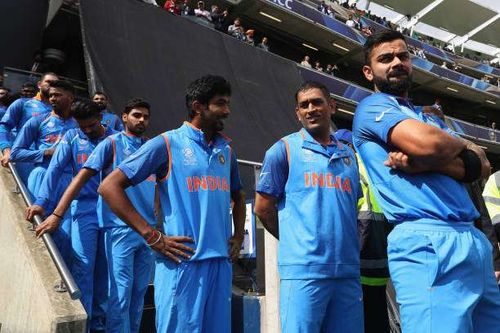
The myth of retaining a winning combination
Norman Schwarzkopf Jr, the American Commander-In-Chief during the First Gulf War, had this to say on the merits of preparation: “The more you sweat in peace, the less you bleed in war.”
When it comes to team sports, much like planning a battle, preparation boils down to two things: selecting the right team of people and planning out the ‘engagement’.
For most team sports, team selection has two primary inputs – the skill/form of your own players and the skill/form of the other team. In a game like cricket, unlike most other team sports, there is an additional factor that influences team selection and game plans; the pitch and ground conditions. Sometimes the crowd matters as well, although, over time, cricketers have matured enough to be immune to the crowd support or the lack of it.
Of course, like the American armed forces say, “The best laid plans can fail when they meet reality” (I am paraphrasing here) – however, there should be some best laid plans in place for that to happen.
All of which begs the question: why should a winning combination be retained for the sake of it like the Indian team have done consistently?
In Sunday’s ICC Champions trophy final, for example, certain factors were already known:
- Pakistan play spin well and if anything, have been susceptible to pace. They had lost only 3 wickets to spinners in the entire tournament (2 of them taken by Ravi Jadeja in a match that was universally considered to be an unfair representation of Pakistan’s form).
- The pitch was said to be flat and fresh; in other words, as good a belter as they come.
- Indian spinners had been ineffective throughout the tournament – taking 7 wickets out of the total 29 prior to the final (2 of which came by the hand of a part-timer, Jadhav)
Then why would India go into the match with two spinners instead of picking Umesh Yadav or Mohammed Shami in place of one of the spinners or potentially both? The canned response to that question has been: ‘We don’t want to change a winning combination.’
The decision to not change, in hindsight, turned out to be self-defeating. Between Ashwin and Jadeja, the duo took no wickets and leaked 137 runs in 18 overs at a eye-popping run rate of 7.61 runs per over. In addition they batted miserably – adding only 14 runs and of course, causing that unfortunate Pandya run-out. It was true the other way around too – the majority of runs India could score came from Pakistani spinners.
So why does the Indian think-tank resist changing a winning team combination?
The general argument issued in its favour is that there’s momentum with the playing team and one shouldn’t mess with this so-called momentum. So does that mean that the other four guys in the dressing room are not involved in the game at all? If so, doesn’t it mean that there is a failure in uniting the squad in this emotional mesh that binds the playing eleven?

In other words, this closely held and closely guarded principle points to several factors with the current Indian team’s thinking which are worrying:
- They are not challenging the status quo or the fundamental beliefs/axioms they believe in to be successful at the highest level – this is what great teams do, this is how they develop big game mentality.
- It points to a lack of adaptability in this team both on this account as well as on the field – we need better tacticians who react decisively to the ebb and flow of the game – as was apparent both in this final as well as the game against Sri Lanka. There was a severe lack of ‘on field creativity’ on part of the Indian think-tank. A very telling evidence of this approach is the way Kohli characterised the Indian team to be ‘boring’. He was being polite – they are being formulaic, rigid and set in their ways.
- Similarly there seems to be no attempt made to surprise the opposition – India’s decision was almost predictable and allowed Pakistan to conceive their game plans that would survive through the match. Why isn’t there any attempt made to rattle the opposition, in fact, there is not even the mindset to do so? (It’s unfair to say that this team has always been this way – under Dhoni there were googlies thrown at the opposition and shrewd changes to game plans to rattle them)
- Worst case scenario: it may mean that the Indian team is not spending enough time studying their opposition or the conditions enough. If that’s true then the support staff is terrible and should be replaced, if not then it goes back to the above point – unwillingness to adapt to the conditions, staying rigid and playing the same game irrespective of external factors. That is exactly how big organisations fail and that is what prevents good teams from becoming great.
In summary, the Indian team and its immense support staff need to acknowledge and work on adding the element of being fluid and not conforming to a template that may serve them on most days as that kind of game play may reward the team with higher wins than average but not success in a highly competitive setting.
They need coaches, managers and support staff that push them to challenge the status quo and become a flexible team that adapts to changing conditions. In the words of Bruce Lee: “Set patterns, incapable of adaptability, of pliability, only offer a better cage. Truth is outside of all patterns.”
